BAVARIA
History

History
Cities in BAVARIA
| Munich |
Popular destinations GERMANY
| Bavaria |
History
Prehistory, Antiquity, Romans and Tribe Duchy
The prehistoric settlement history of Bavaria started about 3,500 years ago in the Bronze Age. From 800 BC. The Celts came to Bavaria from Western Europe, preceded by tribes such as the Illyrians. In the 1st century BC. At about the same time the Romans arose from the south and the Germans from the north.
The Romans initially prevailed and occupied the whole area between the Danube and the Alps . A large part of present-day Bavaria, including the cities of Kempten (Cambodunum) and Augsburg (capital Augusta Vindelicorum), were then in the Roman province of Raetia. The presence of the Romans was very evident in the landscape: besides many fortresses and castles at strategically important points, military cities, trade roads and routes were built.
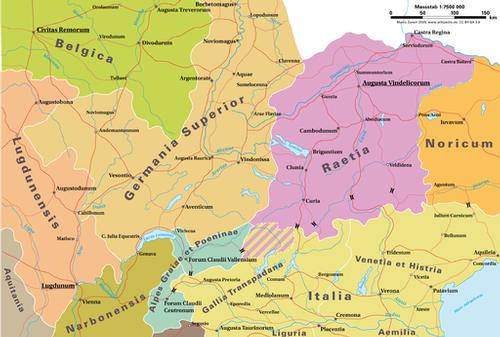 Roman provinces in the Alpine region (ca.150 AD), including RaetiaPhoto: Sidonius CC 4.0 International no changes made
Roman provinces in the Alpine region (ca.150 AD), including RaetiaPhoto: Sidonius CC 4.0 International no changes made
In the period of the Great Migration (between 4th and 6th century), in the 5th century AD. a definitive end to the Roman era in Bavaria. The area between the rivers Iller and Lech now came under the influence of the Germanic tribe of Alemannen, followed a century later by the Merovingians as part of the Frankish Empire. At the same time, the area west of the Lech, part of today's East, South and Central Bavaria, was inhabited by the Germanic tribe of Baiern or Bajuwaren (also known as Bavarii). The form of government was an independent tribal duchy led by the dukes of the Agilolfingen, residing in Regensburg in eastern Bavaria. The first duke was Garibald I of Bavaria and the Agilolfingen would rule the area for about two centuries.
In 788, the last Duke of the Agilolfingen, Tassilo III, was deposed by the troops of Charlemagne (ca. 747 / 748-814), ruler of the Carolingian Empire. At that time, the current Austrian city of Salzburg was still in the middle of Bavaria and was elevated to an archdiocese in 798.
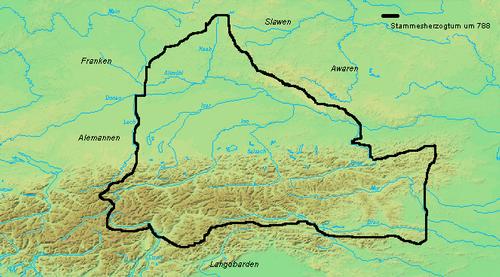 Tribal duchy of the Agilolfingen in 788Photo: Public domain
Tribal duchy of the Agilolfingen in 788Photo: Public domain
Charlemagne's Frankish Empire fell into three parts in 843; From that time on, Bavaria formed the center of the East Frankish Empire under the leadership of a grandson of Charlemagne and third son of his successor Louis the Pious (778-840), King Louis II the German (also Louis de Bavarian).
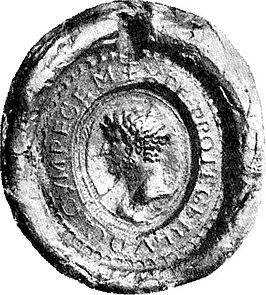 Seal of Louis the German (806-876)Photo: Public domain
Seal of Louis the German (806-876)Photo: Public domain
In the 10th century, Bavaria was attacked by Hungarians who destroyed Bavaria's army at Bratislava. The East Frankish Empire was not much more and again a tribal duchy was created for Bavaria, with as first Duke, Arnulf I of Bavaria 'the Evil One', who ruled from 907 to 937. He built up a new army to fight Hungarian looters, which succeeded in 909, 910 and 913. But finally Arnulf made an agreement with the Hungarians in 913, which meant that Bavaria would no longer be bothered by the Hungarians for a long time and they were finally expelled from Bavaria in 955.
Under Otto I, crowned Emperor of the Holy Roman Empire of the German Nation in 962, the Duchy of Bavaria expanded spectacularly and even present-day Niederösterreich, Vienna, Carinthia, Styria, Friuli and Verona, became part of Bavaria. However, this hegemony did not last long, as a conflict with Emperor Otto II made Carinthia a separate duchy in 976. In 1002, Duke Heinrich IV was proclaimed Emperor Heinrich II and the independent tribal duchy of Bavaria came to an end, which was passed on to the Swabian-Italian Guelph dynasty in 1070.
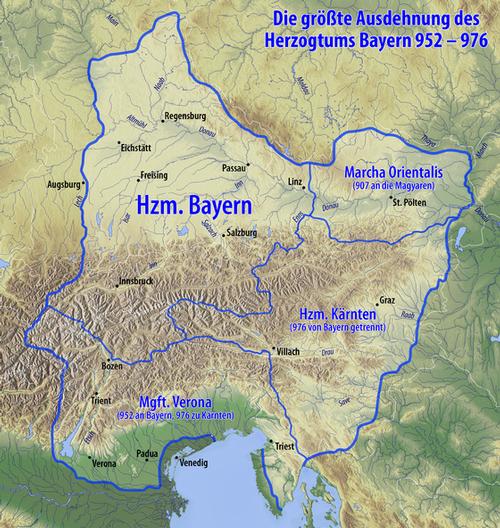 Extension of the tribe duchy of Bavaria, period 952-976Photo: CC BY-SA 3.0 no changes made
Extension of the tribe duchy of Bavaria, period 952-976Photo: CC BY-SA 3.0 no changes made
Under this dynasty, Bavaria regained much of its power and under Heinrich X the Duchy of Saxony and regions in Tuscany belonged to Bavaria. In 1138, Conrad III 'of Swabia' was proclaimed king and a fierce battle for power ensued with Heinrich X. Conrad managed to defeat Heinrich and in 1139 took from him the Duchy of Bavaria and gave it to his half-brother Leopold van Babenberg. In 1156, Heinrich XII "the Lion" of the Guelph family got the duchy of Bavaria back in a slimmed-down form and in 1158 he founded the trading post of Munich, the later state capital.
In 1180 Bavaria came into the hands of the Count Palatine Otto I of Bavaria of the house of Wittelsbach. Initially, Otto was the army commander of Emperor Friedrich, who took Bavaria from Heinrich XII and made Otto duke. The Wittelsbach family would supply dukes, electors and later kings to Bavaria until 1918.
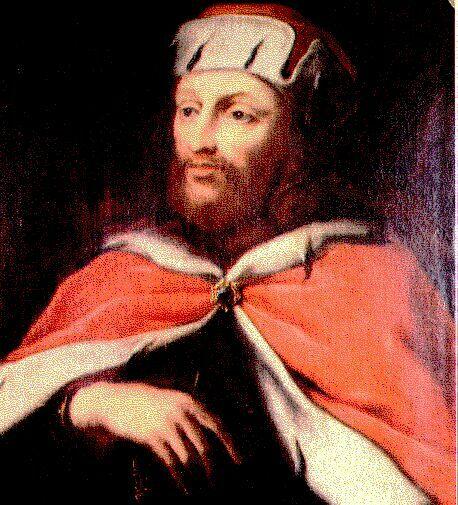 Otto I of Bavaria (Wittelsbach), 1117-1183 Photo: Public domain
Otto I of Bavaria (Wittelsbach), 1117-1183 Photo: Public domain
House Wittelsbach
In 1255 the Duchy of Bavaria was divided between Ludwig II 'the severe' (1229-1294) and Heinrich XIII (1235-1290). Ludwig was given Upper Bavaria and the Palatinate, with Munich as his residence; As Heinrich I, Heinrich became Duke of Niederbayern with Landshut as his residence. Less than a hundred years later the split-up came to an end; Ludwig IV 'der Baier' (1282-1342), youngest son of Ludwig 'the severe', united both parts in 1340, gave Bavaria a period of prosperity and added Brandenburg, Tyrol, Zeeland, Holland and Hainaut. In the period 1349-1506 Bavaria became smaller and smaller due to inheritance issues and area divisions. Tyrol thus came into the hands of the Habsburgs in 1363 and Holland and Hainaut were taken over by Burgundy.
At the end of the 14th century, in 1392, Bavaria was divided into the duchies of Munich, Landshut, Ingolstadt and Straubing. Under Duke Albrecht IV 'the Wise' (1447-1508) the four duchies were merged again and in 1506 Munich was proclaimed the capital of Bavaria, which, under Albrecht V (1528-1579) and his eldest (surviving) son Wilhelm V ' the pious '(1548-1626), an enormous art lover, went through a architectural period, among other things, but saddled his successor Maximilian I with great debts.
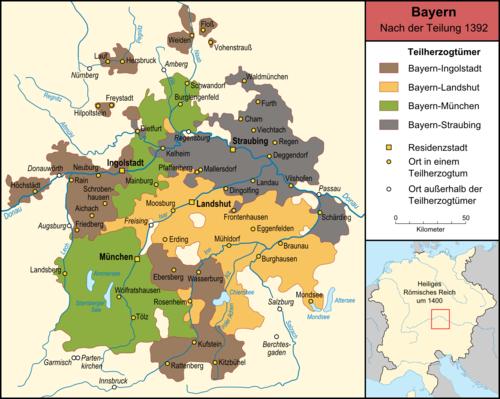 Bavaria after the partition in 1392Photo: Lencer CC 3.0 Unported no changes made
Bavaria after the partition in 1392Photo: Lencer CC 3.0 Unported no changes made
The Counter-Reformist Maximilian (1573-1651), the eldest son of Wilhelm V, took over from his father in 1597 and carried out many reforms at the administrative level and put the finances back in order. He was a supporter of Emperor Ferdinand II, who rewarded him as Elector of the Electorate of Bavaria for this. However, he did go to war with Bavaria by placing himself in the Thirty Years' War (1618-1648) with the 'Catholic League' he founded in 1609, diametrically opposed to the Protestant 'Union'. Initially the '' League 'had the upper hand and, under the leadership of the Bavarian general Johann T'Serclaes von Tilly (1559-1632), defeated the Protestants in 1620.
When Sweden started to interfere in the war, the 'League' was soon over, in 1632 the Swedes entered Bavaria under the leadership of Gustav II Adolphus and conquered Munich and the whole of southern Germany. In 1646 the Swedes were also succeeded by the French. This war, as well as the Eighty Years' War between Holland and Spain, came to an end with the Peace of Westphalia in 1648, at which Bavaria also regained the status of electorate.
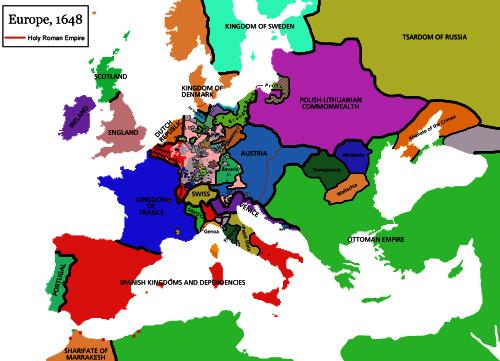 Map of Europe after the Peace of Westphalia in 1648; Bavaria colored green west of 'Austria'Photo: Public domain
Map of Europe after the Peace of Westphalia in 1648; Bavaria colored green west of 'Austria'Photo: Public domain
Under the son of Maximilian I, Elector Ferdinand Maria (1636-1679), who ruled from 1651 to 1679, Bavaria experienced a flourishing period again, with a great deal of attention once again devoted to the design and construction of beautiful buildings. Bavaria also quickly recovered from the economic consequences of the Thirty Years' War, partly because he did not interfere much with European politics at that time and was therefore not involved in wars.
This somewhat neutral policy changed under Maximilian II Emanuel's son 'Max Emanuel or the Blue Elector' (1662-1726), who was Elector of Bavaria from 1679 to 1726 and Governor of the Spanish Netherlands from 1691 to 1706. He fought on behalf of the Roman-German Emperor Leopold I in the Great Turkish War and the Nine Years' War (1688-1697) between the League of Augsburg and Sun King Louis XIV of France. The aim of this war was to push France back to the borders set at the Peace of Nijmegen in 1678, and the coalition to which Bavaria joined also included Great Britain, the Republic of the Seven United Netherlands, Savoy and Brandenburg-Prussia..
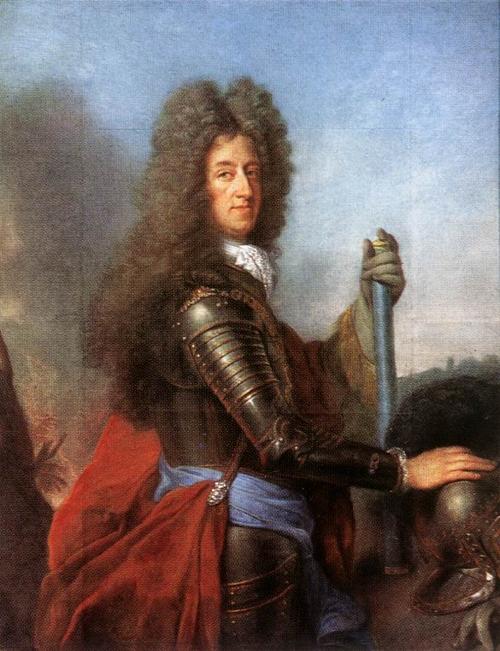 Maximilian II, Elector of BavariaPhoto: Public domain
Maximilian II, Elector of BavariaPhoto: Public domain
Max Emanuel also played a (large) role in the conquest of Belgrade in 1688 and the War of the Spanish Succession (1701-1714), in which he achieved little success. On the contrary, after a defeat at Hochstätt in 1704, Bavaria was overrun by an Austrian army and Max Emanuel and his brother Jozef Clemens were put in the Reichsbann to the Southern Netherlands. After the Treaty of Utrecht in 1713 and the Treaty of Rastatt in 1714, Max Manuel was again raised to the Bavarian throne and in 1717 he was restored to his Electoral status. Until his death in 1726, Max Manuel was mainly involved in architecture, including the Schleissheim Palace to the north of the state capital Munich.
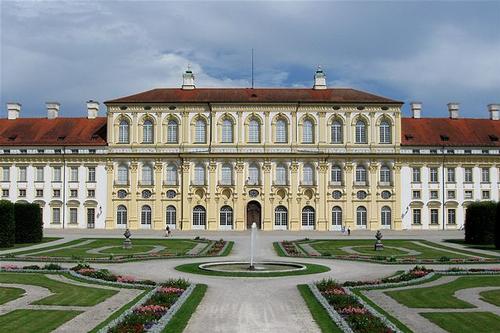 West side of Schloss SchleissheimPhoto: Rufus46 CC 3.0 Unported no changes made
West side of Schloss SchleissheimPhoto: Rufus46 CC 3.0 Unported no changes made
After the death of his father Max Manuel in 1726, Karl VII Albrecht (1697-1745) ascended the Bavarian throne as Elector and Duke Karl I and even made it to Roman-German Emperor from 1742 to 1745. Karl, who married the daughter of Emperor Joseph I in 1722, was already in command of Bavarian auxiliary troops in 1717 at the age of 20 in the Austro-Turkish War of 1716-1718. In the War of the Austrian Succession (1740-1748), together with Friedrich II of Prussia, he sided with the opponents of Austria and her Empress Maria Theresia. At the Treaty of Nymphenburg in 1741 he was promised, among other things, the imperial crown and Bohemia; Thus it was, and from 1741 to 1743 he became king of Bohemia and from 1742 until his death in 1745 Roman-German king and emperor.
With the support of Hungary and an armistice with Prussia, Maria Theresia regained the courage to march against Bavaria. Eventually her troops marched into Munich and Karl Albrecht lost everything for a short while. At the time of reclaiming Munich from the Austrians, he died on January 20, 1745 and was succeeded by his eighteen-year-old son Maximilian III Joseph (1727-1777). At the time, Bavaria was still involved in the War of the Austrian Succession, but Maximilian Joseph made peace with Austria in April 1745 and promised not to claim the imperial throne. He also carried out a number of social reforms, but mainly focused on science, art and literature. He introduced general compulsory education, founded the Bayerische Akademie der Wissenschaften, but turned out not to be a genius financially. Due to his childless marriage to Maximilian III Joseph, the Bavarian branch of the House of Wittelsbach died out and he was succeeded in 1777 by Karl Theodor (1724-1799) of the Sulzbach branch.
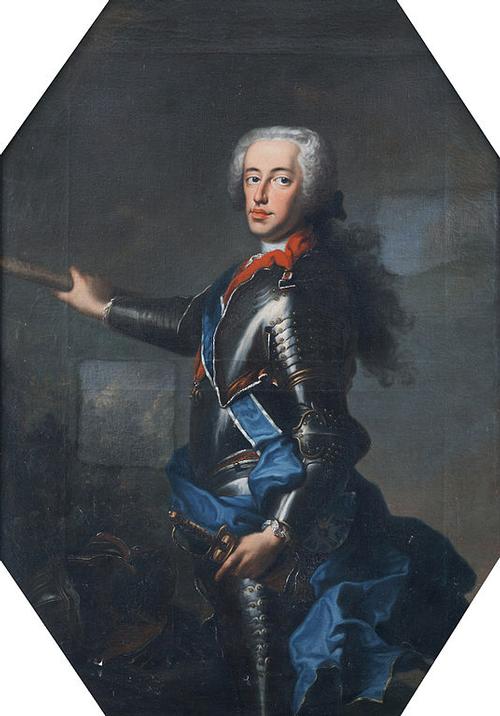 Karl VII Albrecht, Elector of BavariaPhoto: Public domain
Karl VII Albrecht, Elector of BavariaPhoto: Public domain
He had been Elector of the Palatinate since 1742 and also Marquis of Bergen op Zoom from 1742-1795. Despite all those functions, he chose Munich as his primary residence in 1777. Like many other princes of the House of Wittelsbach, Karl Theodor was also very interested in science, economics, art and especially music, which brought him into contact with the famous composer Wolfgang Amadeus Mozart, who wrote an opera on his behalf, Idomeneo, of which the first performances naturally took place in Munich.
Karl Theodor also died childless and was succeeded in 1799 by Elector Maximilian IV Joseph, who at that time had been Duke of Pfalz-Zweibrücken since 1795 and descended from a branch of the House of Wittelsbach. Maximilian IV Joseph ruled until 1825 and had to allow Munich to be occupied by Napoleon's French around 1800. At the Peace of Lunéville, he also had to cede to France areas west of the Rhine, the Rheinpfalz '. However, the Bavarian minister Montglas was smart enough to join the Confederation of the Rhine (1806-1813), a confederation of initially sixteen German vassal states of the First French Empire. The French Empire thus obtained a strategically strong buffer on the eastern front.
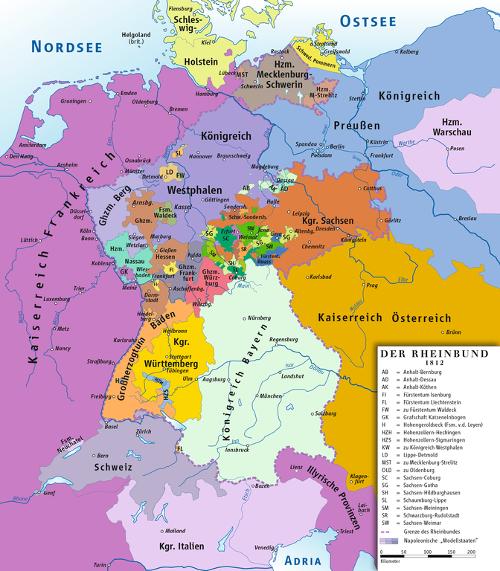 Confederation of the Rhine in 1912Photo: Ziegelbrenner CC 3.0 Unported no changes made
Confederation of the Rhine in 1912Photo: Ziegelbrenner CC 3.0 Unported no changes made
This action in favor of Napoleon did earn him the title of King Maximilian I Joseph of Bavaria, and as compensation for the loss of the Rheinpfalz, Bavaria got back a number of other areas, the region around Salzburg and Berchtesgaden. After Napoleon's dramatic campaign, with the participation of Bavarian soldiers, against Russia in 1812, Maximilian Joseph defected to Austria in 1813 and in 1815 joined the German Confederation, a loose alliance of 34 German principalities and four cities that arose. at the Congress of Vienna. With this German Confederation, they wanted to preserve Germany's independence from other countries, but still through autonomous states. The German Confederation could be said to replace the Holy Roman Empire of the German Nation, which had already been abolished in 1806 by Franz II Joseph Karl von Habsburg-Lorraine (1768-1835), the last elected emperor of the Holy Roman Empire. In 1818 Maximilian Joseph proclaimed another constitution in which the people were represented by two chambers in the government.
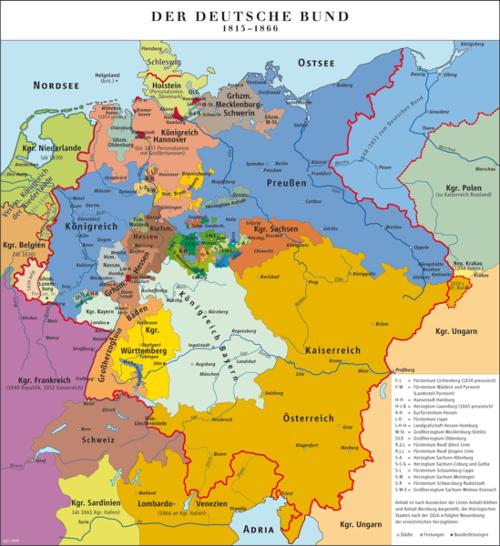 Der Deutsche Bund, 1815-1866Photo: Ziegelbrenner CC 2.5 Generic no changes made
Der Deutsche Bund, 1815-1866Photo: Ziegelbrenner CC 2.5 Generic no changes made
Maximilian Joseph died in 1825 and was succeeded until 1848 by his son Ludwig I (1786-1868) as King of Bavaria. Ludwig married Theresia von Sachsen-Hildburghausen on October 12, 1810, and since that date the Oktoberfest in Munich continues to be held in October. And like so many of his predecessors, Ludwig was also a great lover of architecture and he made it clear. Munich was 'built up' with the most fantastic looking buildings, often in his favorite classicist style, including the Bavarian State Library, the Glyptothek and the Siegestor. Interest and admiration for Greece and its ancient culture went so far as to crown his son Otto king of Greece in 1830. Baiern's spelling was also changed to Bayern, because the Greek 'y' naturally appealed more to his imagination than the regular 'i'. Also important for the development of Munich was the relocation of the University of Landshut to Munich. In terms of democratic content of his administration it became somewhat less, for example the arch-conservative Ludwig had the opposition press censored. After a private scandal, Ludwig abdicated on March 20, 1848 and passed the throne to his eldest son Maximilian II (1811-1864).
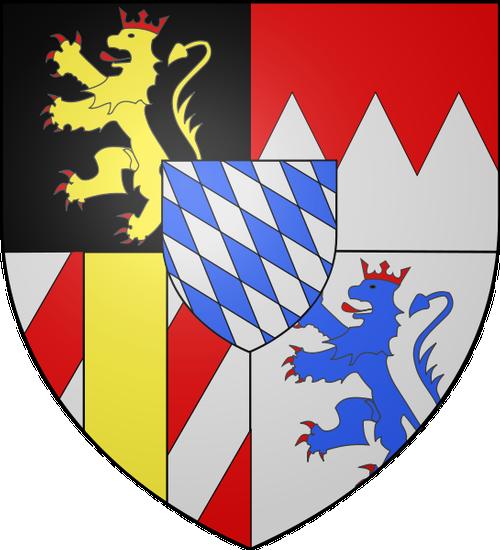 Coat of arms of the House of Wittelsbach after 1835Photo: Odejea CC 3.0 Unported no changes made
Coat of arms of the House of Wittelsbach after 1835Photo: Odejea CC 3.0 Unported no changes made
Maximilian II ruled at a time (1848-1864) when Bavaria was changing from an agricultural state to an industrial state. In 1835, the first railway line in Germany was put into operation around Nürnberg, and railway lines were soon built all over Germany. Maximilian moved with the times and stimulated art, science and technology and gave his own, more modern twist to architecture in Munich. Maximilian died suddenly in 1864 and his eldest son Ludwig became king of Bavaria at the age of eighteen as Ludwig II. Bavaria, meanwhile, had become increasingly industrialized and workers unions were established in several Bavarian cities. Ludwig, who had a very strict upbringing, was completely uninterested in such matters and lived more or less in his own world, and was not called "der Märchenkönig" for nothing. In 1866, Bavaria became involved in the brief war between Austria and Prussia, but he gladly let himself be replaced as army commander by his also mentally ill brother Otto Willem Luitpold Adalbert (1848-1916), later King Otto I. Austria and thus Bavaria lost the war against Prussia and Bavaria joined, after an initial exclusion, the North German Confederation founded by Otto von Bismarck. Ludwig's Bavaria became increasingly trapped in Bismarck's safety nets as he paid Ludwig's debts. In exchange, Bismarck was given control of the Bavarian army, which was therefore obliged to participate with Prussia in the Franco-Prussian War in 1870. Prussia became more and more powerful and Bismarck founded the German Empire (January 18, 1871 - November 9, 1918) in 1871, with the permission of Ludwig, under Emperor Wilhelm I of Prussia and Bismarck as Reich Chancellor. Bavaria lost its sovereignty in this way through Ludwig's action, but he preferred to listen to his favorite composer Wagner and had several beautiful castles built, including Schloss Underhof and the never-completed castles Schloss Neuschwanstein and Schloss Herrenchiemsee. In 1886, the Bavarian Council of Ministers appointed a regent to take over the current affairs of Ludwig and the king was exiled to his castle Schloss Berg on Lake Starnberg. A few days later Ludwig was found dead together with his personal physician Von Gudden, murder or suicide is still not entirely clear, murder seems the most obvious.
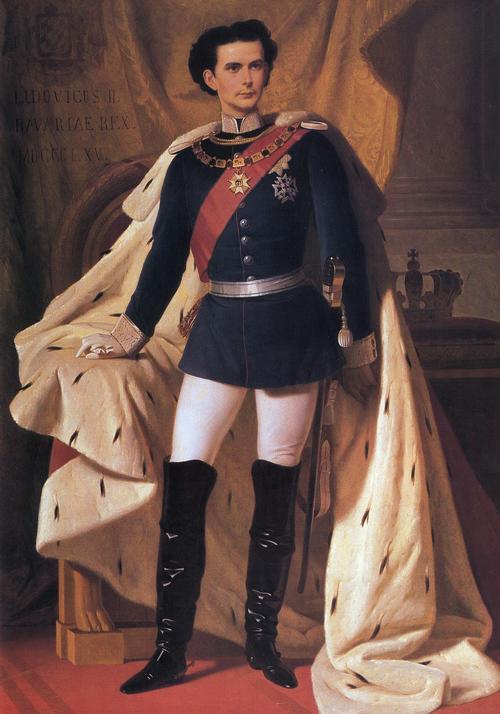
Ludwig was, of course, succeeded by his brother Otto I. But real power was now in the hands of regent and uncle of the two brothers, Luitpold, who ruled from 1886 to 1912. Otto was already in an institution at that time and died in October 1916, still with his title as king. Luitpold was succeeded in 1912 by his son Ludwig III (1845-1921), who was crowned king on November 5, 1913. During the First World War (914-1918), dissatisfaction with the policies and consequences of the war in Luitpold's Germany grew and many political parties in the Reichstag were convinced that reforms were necessary. They would come very soon, faster than Ludwig III thought possible. After the armistice in the summer of 1918, the naval leadership wanted to wage another battle against the British fleet, but the sailors and marines refused and revolted, the start of the so-called November Revolution, which slowly moved from the north to the North. south and also marked the end of the German Empire of Wilhelm II, which emigrated to the Netherlands, and the beginning of the Weimar Republic, which lasted until 1933.
On November 7, 1918, the social democrat and Bavarian politician Kurt Eisner (1867-1919), leader of the Unabhängige Sozialdemokratieve Partei Deutschlands (USPD), proclaimed the Bavarian Free State, King Ludwig was deposed and so after 738 years it came to an end for House Wittelsbach. Initially, the Sozialdemokratieve Party Deutschlands (SPD) did not want to cooperate, but not much later formed a coalition with the USPD. In January 1919, state elections were held in Bavaria, which was a major defeat for Eisner's USPD and a profit for the socialists.
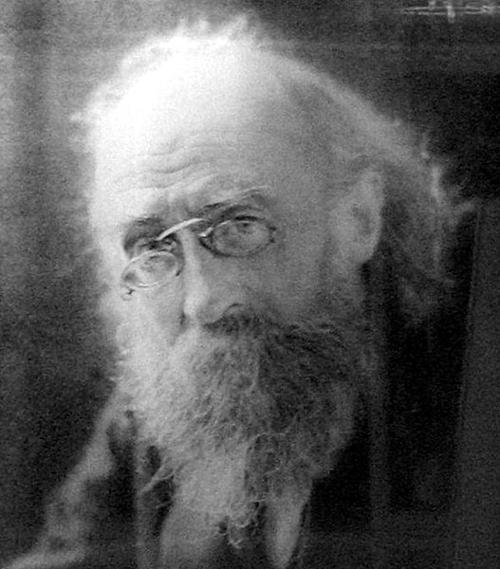 Kurt Eisner, Bavarian politicianPhoto: Richard Huber CC-by-sa 3.0 no changes made
Kurt Eisner, Bavarian politicianPhoto: Richard Huber CC-by-sa 3.0 no changes made
On February 21, 1919, a major blow to the socialist government, Kurt Eisner was shot dead by the young Count Anton von Arco auf Valley. Due to the great unrest caused by this event, the government of the first freely elected Prime Minister of Bavaria, the socialist Johannes Hoffmann (1867-1930), moved to Bamberg in northern Bavaria. In revenge for the murder of Kurt Eisner, on April 7, 1919, the independent socialists, led by the writer Ernst Toller (1893-1939) and the anarchists Erich Mühsam (1878-1934) and Gustav Landauer (1870-1919), proclaimed the Council Republic Bavaria 'Räterepublik Baiern'. However, this revolutionary attempt did not get off the ground and was soon hijacked by the communists led by Eugen Leviné (1883-1919). That attempt also quickly failed, because on May 1, 1919 Munich was already recaptured by Johannes Hoffmann with the help of troops from Prussia and Württemberg. The subsequent 'purges' cost quite a few human lives.
On August 14, 1919, Bavaria's first democratic constitution, the 'Bamberger Verfassung', came into effect. In 1920 the Freistaat Coburg joined Bavaria after a refrendum and on March 13, 1920 the so-called 'Kapp-Lüttwitz-Putsch' resulted in Prime Minister Hoffmann of Bavaria resigning. Led by General Walther von Lüttwitz (1859-1942), General and politician Erich Ludendorff (1865-1937) and Wolfgang Kapp (1858-1922), the putsch was a direct attack on the democratically elected government in Berlin. This attempt at a revolution lasted only five days, partly due to a lack of common goal among the putschists and national strikes in protest against the putsch.
Hoffmann was succeeded as Prime Minister by the monarchist, lawyer and politician Gustav von Kahr (1862-1934), who was Prime Minister and Minister of Foreign Affairs of Bavaria from March 16, 1920 to September 11, 1921. His goal was to make Bavaria an autonomous region within Germany, but failed. In 1922, the politician Eugen von Knilling (1865-1927) became Prime Minister and Secretary of State, and under his leadership, right-wing elements were favored, creating a favorable climate for right-wing extremists. In the autumn of 1923, at the height of the dispute between Germany and a Belgo-French occupation force in the Ruhr, a state of emergency was declared in Bavaria and Von Kahr was given powers that could have led to a dictatorship. To take the wind out of Von Kahr's sails, Reich President Friedrich Ebert (1871-1925) lifted the state of emergency, but that had little effect because General Hans von Seeckt, commander-in-chief of the Wehrmacht, sympathized with Von Kahr and he formed together with the military Otto von Lossow (1868-1938) and the chief of the Bavarian police force Hans von Seißer (1874-1973) are a triumvirate. they deported several hundred Jewish families, banned a number of leftist newspapers and banned the law during the Weimar Republic.
On November 9, Adolf Hitler (1889-1945) first came into the picture, having the café Bürgerbräustelle in Munich surrounded when Gustav von Kahr gave a speech there. He stated that the government in Berlin had been overthrown, but eventually police intervened and the Hitler Putsch had failed. on February 27, 1924, von Kahr retired from politics, but Hitler had not forgotten his role in the failed putsch. When he came to power in 1933, he settled Von Kahr, had him arrested on June 30, 1934 and murdered that same day in Dachau concentration camp.
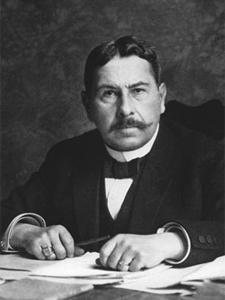 Gustav 'Ritter' von Kahr, Prime Minister of BavariaPhoto: Public domain
Gustav 'Ritter' von Kahr, Prime Minister of BavariaPhoto: Public domain
In June 1924, Heinrich Held (1868-1938) of the Bayerischen Volkspartei became Prime Minister and focused on the independence of Bavaria in the political system of Germany. For a long time he underestimated the danger of the extreme right and did not have a majority in parliament from 1930 onwards. By the grace of the SPD he was allowed to stay on as prime minister. On March 15, 1933, he was forced to resign by Hitler's National Socialists.
Hitler had come to power as Chancellor of the Reich in January 1933 and, as an approximate first measure, had stripped all states of their relative sovereignty; everything was equated. Furthermore, in Hitler Germany, Bavaria always had more or less a pioneering role in all kinds of, often 'dubious' areas. For example, many important party members of the National Socialist Deutsche ArbeiterPartei (NSDAP) came from Bavaria and a book burning took place on May 10, 1933, on the Köningsplatz in Munich. Months before Kristalnacht in November 1938, National Socialist activists destroyed the synagogues of Nürnberg and Munich, and the first concentration camp was opened in Dachau in 1933. Munich was named the 'capital' of the NSDAP, the Reich Party Days were held in Nürnberg, and in 1935 the three Nürnberger racial laws were introduced.
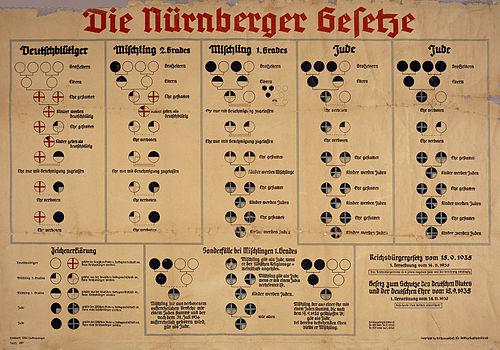 Scheme used to explain the division into German and JewPhoto: Public domain
Scheme used to explain the division into German and JewPhoto: Public domain
In 1937 the first exhibition of 'Entartete Kunst' took place in Munich, but in 1939 the first attack on Hitler also failed, in the Bürgerbräukeller in Munich. Bavaria's most famous resistance group was the Weiße Rose from Munich, as well as the Münchner Neuesten Nachrichten who, until May 1933, had held opposition to Hitler, including Erwein von Aretin and Karl Ludwig Freiherr von und zu Guttenberg. In the last days of the war, on 27/28 April 1945, an uprising against the Nazis in Munich by the 'Freiheitsaktion Bayern' of Rupprecht Gerngross (1915-1996) failed, which was able to get away just in time. Forty other insurgents were less fortunate, they were killed just before the invasion of American troops.
On March 9, 1933, Franz von Epp (1868-1947) was appointed by Minister of Internal Affairs Wilhelm Frick as Reich Commissioner in Bavaria and had to ensure that Hitler's so-called 'Richtlinien der Politik' were complied with in the federal states. In April 1933, the later leader of the Schutzstaffel (SS) Heinrich Himmler (1900-1945) became the head of the police throughout Bavaria. On April 10, 1933, Epp was proclaimed 'Reichsstatthalter' and Ludwig Siebert (1874-1942) was formally proclaimed Prime Minister of Bavaria. After the passed law regulating the rebuilding of the German Empire, Bavaria lost its status as a federal state. After the death of Siebert in 1942, no official successor was appointed, but the 'gauleiter' of Ober-Bayern, Paul Giesler (1895-1945), took over his duties for the time being.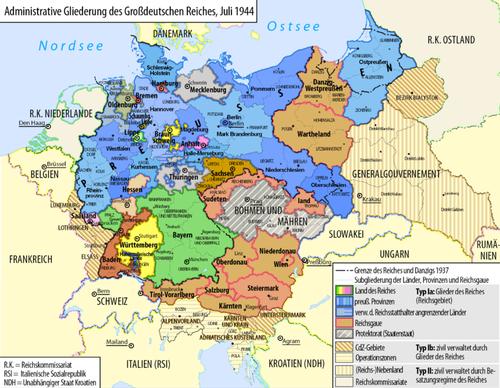 Administrative division of the Greater German Reich in July 1944Photo: Public domain
Administrative division of the Greater German Reich in July 1944Photo: Public domain
From 1943 Bavarian cities such as Munich, Nürnberg and Würzburg were bombed by the Allies and these attacks caused major damage. In the Second World War about 250,000 Bavarian soldiers died and about 230,000 were missing. In addition, there were also approximately 28,000 civilian deaths. In the summer of 1947, there were still 212,494 POWs interned in Bavaria, of which nearly 75% were Bavarians.
During the Potsdam Conference (July 17 to August 2, 1945), the Potsdam Agreement was drawn up, which stipulated that Bavaria would be under American control. Exceptions were the Palatinate and the town of Lindau, which came under French control.
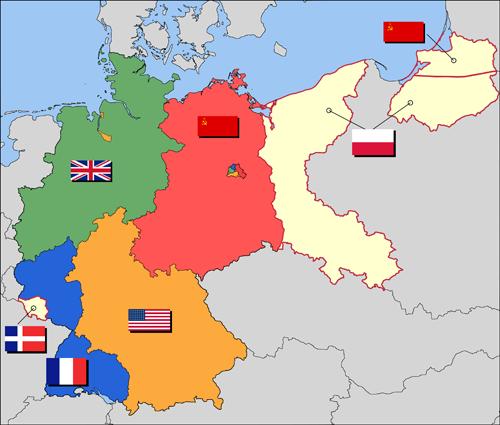 Germany became after the 2nd World War II. divided into occupation zones; Bavaria was occupied by the AmericansPhoto: Public domain
Germany became after the 2nd World War II. divided into occupation zones; Bavaria was occupied by the AmericansPhoto: Public domain
On May 28, 1945, Fritz Schäffer (1888-1967) of the Bayerischen Volkspartei was appointed by the American military government as the first post-war Prime Minister. On September 28 of the same year, however, he was fired again by the Americans for doing too little in their opinion to remove former NSDAP members from public services. Schäffer was succeeded by the social democrat Wilhelm Hoegner (1887-1980), until now the only minister-president of Bavaria who did not come from the CSU (Christlich-Soziale Union).
September 28, 1945 was also the date that Bavaria regained its state status from the American General Eisenhower. The leader of the military government, Lucius D. Clay, enforced this process, which allowed political parties to act again and restore the democracy bottom-up. On June 30, 1946, a Constituent Assembly was elected at which the successor of the Bayerischen Volkspartei, the Christlich-Soziale Union (CSU), received an absolute majority. The draft constitution was approved by the occupying forces, except for the article stating that Bavaria had the right not to join a future German Confederation.
The Constitution of the Free State of Bavaria was adopted by a large majority in a popular referendum on December 1, 1946. At the same time, a state parliamentary election was held for the first time after World War II, which was also convincingly won by the CSU. Minister-president was Hans Ehard (1887-1980), who alternated alone and with the BayernSPD (Sozialdemokratieve Partei Deutschlands, Landesverband Bayern). In 1945, the Thuringian enclave Ostheim von der Rhön was added to the Bavarian territory, the Palatinate was added to the new federal state of Rheinland-Pfalz in 1946. In 1955 the city of Lindau was added back to Bavaria.
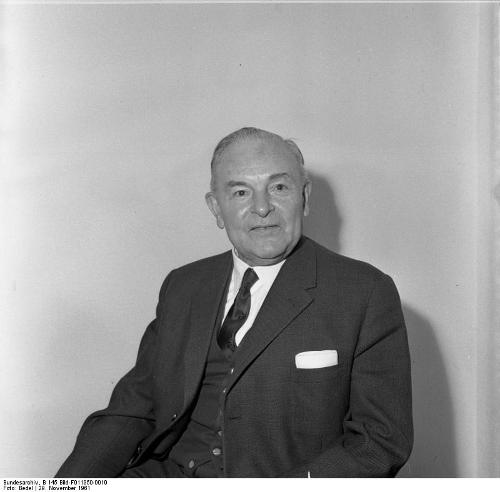 Hans Ehard, Prime Minister of BavariaPhoto: Bundesarchiv, B 145 Bild-F011950-0010 / Bedel CC-BY-SA 3.0 no changes made
Hans Ehard, Prime Minister of BavariaPhoto: Bundesarchiv, B 145 Bild-F011950-0010 / Bedel CC-BY-SA 3.0 no changes made
Ehard succeeded in pushing through a large number of proposals for far-reaching federalism into the constitution nationwide. However, he wanted to go much further, but he couldn't do that anymore. a two-thirds majority of the states did not want to go that far, so Bavaria was obliged to comply.
In the 1950s, the CSU faced competition from the Bayernpartei, which was more outspoken than the CSU for Bavaria's autonomy. From 1954 to 1957, Wilhelm Hoegner of the SPD was again Prime Minister, and that period was politically called the 'Viererkoalition', because the government consisted of the SPD, Bayernpartei, FDP Bayern (Freien Demokratischen Partei) and Gesametdeutscher Block / Heimatvertriebenen parties. und Entrechteten.
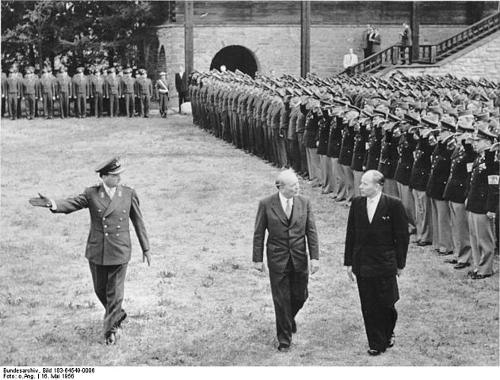 Wilhelm Hoegner (center), Prime Minister of Bavaria (1945-1946, 1954-1957)Photo: Bundesarchiv, Bild 183-64549-0006 CC-BY-SA 3.0 no changes made
Wilhelm Hoegner (center), Prime Minister of Bavaria (1945-1946, 1954-1957)Photo: Bundesarchiv, Bild 183-64549-0006 CC-BY-SA 3.0 no changes made
In addition to reconstruction, Bavaria also took in most of the Reich or State Germans and refugees from areas in Eastern and Southeastern Europe with ethnically German minorities such as Sudetenland, Bohemia, Moravia, Hungary and Romania. Refugee camps were set up throughout Bavaria, some of which were inhabited until the 1960s. Ultimately, about two million of this group of people would settle permanently in Bavaria and various refugee camps grew into villages and towns.
After a break in Wilhelm Hoegner's coalition government, a three-party coalition of CSU, BHE and FDP was formed, led by Prime Minister Hanns Seidel (1901-1961), who ruled from 1957 to 1960. Seidel stepped down in 1960 due to health problems and was succeeded again for two years by Hans Ehard.
The following governments of Alfons Goppel (1962-1978), Franz Josef Strauß (1978-1988), Max Streibl (1988-1993), Edmund Stoiber (1993-2007) and Günther Beckstein (2007-2008) were exclusive CSU governments with an absolute majority; from 2003 to 2008, the CSU even had a second third majority in the state parliament.
 Franz Josef Strauß, Bavaria's most famous prime ministerPhoto: Robert Ward in the public domain
Franz Josef Strauß, Bavaria's most famous prime ministerPhoto: Robert Ward in the public domain
The 16th Bavarian parliamentary election took place on September 28, 2008 and the CSU suffered a major defeat, only 43.4% of the vote went to the CSU, which was 17.3% less than the 2003 election, ending the majority in parliament since 1962. The SPD lost one percentage point, the worst result since 1946. Horst Seehofer (1949-) became prime minister and chairman of the CSU, who in 2011 also held the position of president of the Federal Council. On November 1, 2012, after the resignation of Federal President Christian Wulff, he took up his position until March 18, 2012; On that date, the new Federal President, Joachim Gauck (1940-) began his work.
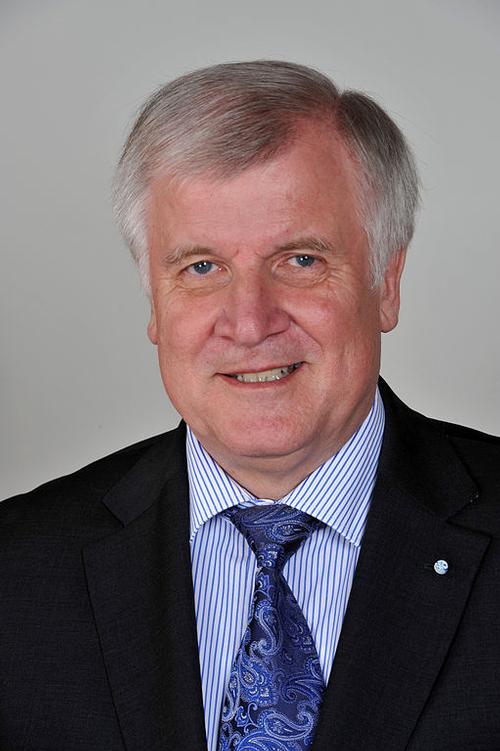 Horst Seehofer, Prime Minister of BavariaPhoto: Ralf Roletschek/wikipedia CC 3.0 nicht portiert no changes made
Horst Seehofer, Prime Minister of BavariaPhoto: Ralf Roletschek/wikipedia CC 3.0 nicht portiert no changes made
In 2015, Bavaria was seriously faced with the refugee crisis in Europe. Hundreds of thousands of refugees arrived in Germany via Bavaria. The Bavarian Interior Minister Joachim Hermann (CSU) wanted to guard the borders of Bavaria himself because the German federal police could not control all border crossings due to a lack of personnel. At that time, at the end of December 2015, an average of 4,000 refugees crossed the border, he wanted to reduce that influx to a maximum of 1,000 refugees per day.
 Refugees wait on a bridge between Salzburg in Austria and Freilassing in Bavaria for entry papers Photo: Eweht Creative Commons Attribution-Share Alike 4.0 International no changes made
Refugees wait on a bridge between Salzburg in Austria and Freilassing in Bavaria for entry papers Photo: Eweht Creative Commons Attribution-Share Alike 4.0 International no changes made
At the end of January 2016, the Bavarian government led by Prime Minister Horst Seehofer made a clear statement about the refugee issue. The Bavarian CSU government requires the national government to limit the number of refugees allowed into Germany. Bavaria wanted to admit a maximum of 200,000 migrants per year. The CSU will get the pin on the nose at the 2018 elections. They remain the largest party, but with only 37% of the vote. The winners are the Greens and the AFD (Alternative fur Deutschland). The CSU forms a coalition with the regional party Free Voters.
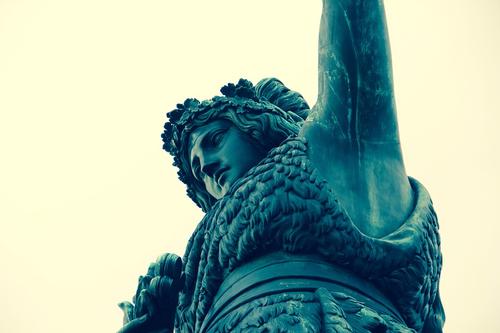 Statue of Bavaria, feminine symbol and secular patronage of BavariaPhoto: Public domain
Statue of Bavaria, feminine symbol and secular patronage of BavariaPhoto: Public domain
Sources
BBC - Country Profiles
CIA - World Factbook
Di Duca, Marc / Munich, Bavaria & the Black Forest
Lonely Planet
Egert-Romanowska, Joanna / Duitsland
Van Reemst
Meyer, Marion / Beieren
ANWB
Oberbayern : bayerisches Alpenvorland
Baedeker
Wikipedia
Copyright: Team The World of Info